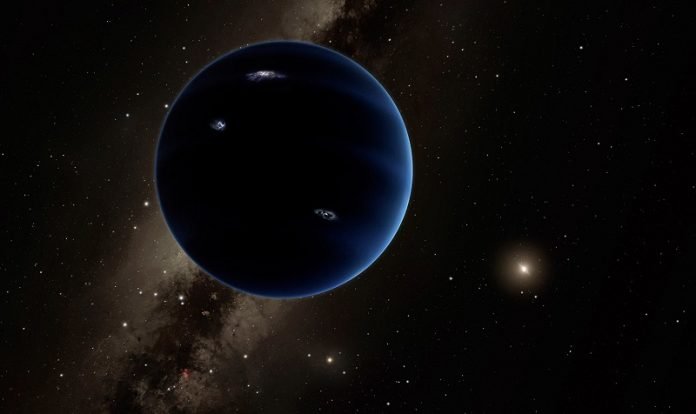
The search for Planet Nine — a hypothesized ninth planet in our solar system — may come down to pinpointing the faintest orbital trails in an incredibly dark corner of space.
That’s exactly what Yale astronomers Malena Rice and Gregory Laughlin are attempting with a technique that scoops up scattered light from thousands of space telescope images and identifies orbital pathways for previously undetected objects.
“You really can’t see them without using this kind of method.
If Planet Nine is out there, it’s going to be incredibly dim,” said Rice, lead author of a new study that has been accepted by The Planetary Science Journal.
Rice, a Ph.D. student in astronomy and National Science Foundation Graduate Research Fellow, presented the findings Oct. 27 at the annual meeting of the American Astronomical Society’s Division for Planetary Sciences.
The possibility of a ninth planet in Earth’s solar system, located beyond the orbit of Neptune, has gained momentum among astronomers in recent years as they’ve examined the curious orbits of a cluster of small, icy objects in the Kuiper Belt.
Many astronomers believe the alignment of these objects — and their trajectories — point to the influence of an unseen object.
Although the vast majority of light observed from planets in the solar system is reflected light, the amount of reflected sunlight drops off dramatically for a planet as distant as Planet Nine, likely to be 12 to 23 times as distant from the Sun as Pluto is.
If it exists, Planet Nine would be a so-called super-Earth.
It would have 5 to 10 times the mass of Earth and be located hundreds of times farther from the Sun than Earth is and 14 to 27 times as distant from the Sun as Neptune is, said Laughlin, senior author of the new study and professor of astronomy in the Faculty of Arts and Sciences.
“This is a region of space that is almost entirely unexplored,” Laughlin said.
To detect objects that are otherwise undetectable, Rice and Laughlin employ a method called “shifting and stacking.”
They “shift” images from a space telescope — like moving a camera while snapping photos — along pre-defined sets of potential orbital paths. Then they “stack” hundreds of these images together in a way that combines their faint light.
Every so often, the light reveals a pathway of a moving object, such as an asteroid or a planet.
Rice said shifting and stacking has been used in the past to discover new solar system moons. This is the first time it has been used on a large scale to search a wide area of space. The images she and Laughlin used came from the Transiting Exoplanet Survey Satellite, a space telescope normally used to search for planets outside our solar system.
The researchers tested their method by successfully searching for light signals of three known, trans-Neptunian objects (TNOs). Next, they conducted a blind search of two sectors in the outer solar system that might reveal Planet Nine or any previously undetected Kuiper belt objects — and detected 17 potential objects.
“If even one of these candidate objects is real, it would help us to understand the dynamics of the outer solar system and the likely properties of Planet Nine,” Rice said. “It’s compelling new information.”
She is currently working with former Yale postdoc Songhu Wang, a faculty member at Indiana University, to check the 17 candidates using ground-based telescopes objects.
Laughlin said the successful use of shifting and stacking on a limited scale will pave the way for a wider-scale survey of the outer solar system, which is particularly compelling given the possibility of finding a new planet.
“We should follow every clue to find out more information,” Laughlin said.
Rice said she remains “agnostic” about the existence of Planet Nine and wants to focus on the data. “But it would be beautiful if it’s out there,” she said.
The National Science Foundation’s Graduate Research Fellowship program supported the work. It is based upon work supported by the National Aeronautics and Space Administration.
Written by Jim Shelton.



